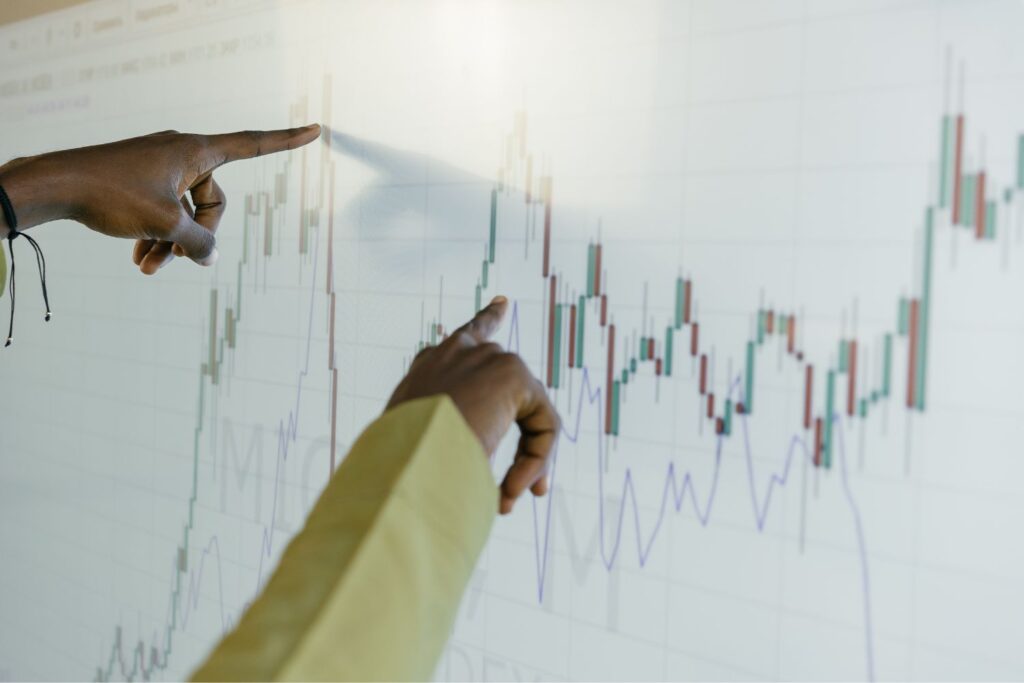Risk reporting: different types of risk reporting
Risk reporting is more than just a compulsory programme – it creates transparency, supports well-founded decisions and strengthens the trust of internal and external stakeholders. This article presents the most important types of risk reporting, from ad hoc and compliance reports to strategic and digital formats.
Effective risk management is essential for companies today – not only for hazard defence, but also as a strategic success factor. In an increasingly complex and interconnected world, organisations must not only identify risks, but also communicate them in a comprehensible manner – both internally and externally. Compliance acts as a unifying element that combines compliance with transparency and corporate responsibility.
Risk reporting is more than just a compulsory programme: risk reporting provides decision-makers with a valid basis, helps to comply with regulatory requirements and strengthens the trust of investors, customers and employees. At the same time, it requires a structured approach, technological support and a deep understanding of the different types of risk reporting.
But what types of risk reporting are there – and when does which form make sense? In this article, we will introduce you to the most important types and show you what is important in practice.
1. Ad-hoc Risk Reporting
This type of reporting occurs spontaneously as soon as an unexpected risk arises. Companies use ad-hoc reporting to quickly assess sudden threats and take appropriate action. They are particularly important in dynamic or crisis-prone industries.
Example: A production error leads to a product recall. Quality control reports this incident directly to risk management, which prepares an ad hoc report – including potential damage, need for action and communication strategy.
Tip: Ad-hoc reports should be clearly structured (e.g. with a fixed template) so that no important information is lost under time pressure.
2. Regular risk reporting
In addition to spontaneous types of risk reporting, regular reports are an integral part of a structured risk management system. They are prepared at specific intervals (monthly, quarterly or annually) and serve to recognise long-term risk trends. This enables companies to make better informed strategic decisions.
Practical example: A consolidated risk report summarising operational risks, external threats and ESG factors is prepared on a quarterly basis in an international logistics company. The results are incorporated into management reporting and strategic planning.
Best practice: The use of risk indicators (KRIs – Key Risk Indicators) makes developments visible over time and enables data-based management.

3. Financial types of risk reporting
These reports focus on financial risks such as market risks, liquidity risks or credit risks. They are particularly relevant for banks, insurance companies and companies with extensive financial transactions. Such reports help to ensure financial stability and inform investors. One example of an effective tool in this area is the BAMAC Group’s Financial Risk Report (FRR), which helps companies to assess the financial stability of their suppliers and recognise potential risks at an early stage.
Example: A mechanical engineering company is about to make a major investment in new equipment. The company uses the Financial Risk Report (FRR) to analyse the creditworthiness and solvency of potential suppliers in advance. The result: two suppliers with an unstable financial situation are excluded, which prevents subsequent project delays.
Benefits: Financial risk reporting creates transparency about external and internal risk factors and helps to avoid poor business decisions.
4. Operative risk reporting
Operational risks include errors in processes, system failures or human error. This type of risk reporting helps companies to minimise operational risks and improve the efficiency of work processes. This type of reporting plays a key role in production, logistics and IT security in particular.
Example: In an e-commerce company, the central merchandise management system is down for several hours – as a result, orders cannot be processed. The cause, downtime, affected processes and immediate measures are documented in the operational risk report. The report serves as the basis for an IT resilience project.
Tip: Operational risk reports should be closely interlinked with process and quality management in order to systematically identify weaknesses.
5. Compliance and regulatory risk reporting
Companies must comply with both statutory and industry-specific regulations. Compliance reports document risks in connection with regulatory requirements and help to avoid violations. They are particularly important for industries with high regulatory requirements, such as the financial or insurance sector. At the same time, sustainability aspects should also be taken into account as part of risk reporting in order to avoid reputational risks and fulfil social responsibility.
Example: A pharmaceutical company is faced with a new EU regulation on packaging labelling. The legal department prepares a compliance risk report with the need for action, deadlines and responsibilities. Implementation is tracked internally on a regular basis. The report also examines the extent to which the new requirements have an impact on ESG criteria.
Practical benefits: Such reports promote internal controllability and minimise the risk of costly sanctions or reputational damage.

6. Strategic risk reporting
This involves long-term risks that can influence the corporate strategy. These types of risk reporting are geared towards the future and analyse potential threats and opportunities for the company. They help management to make well-founded strategic decisions.
Example: A company in the automotive industry regularly analyses geopolitical developments, raw material availability and regulatory trends to assess the impact on its innovation strategy and supply chains.
Benefits: Strategic risk reports link the world of risks with the organisation’s goals and plans – making them a crucial management tool for top management.
7. Digital types of risk reporting
The use of digital technologies offers new opportunities to improve risk reporting. Real-time data analyses, automated reporting processes and interactive dashboards enable faster and more precise risk assessment. The BAMAC Group supports companies with customised digital solutions to make their risk management systems future-proof and efficient.
Example: A company uses a cloud-based risk management platform that automatically aggregates risk data from various business areas. An interactive dashboard shows current developments in real time and enables customised analyses.
BAMAC tip: The BAMAC Group develops such digital solutions with a focus on automation, interface capability and user-friendliness – to turn data into real insights.
Conclusion
Effective risk reporting is an essential component of comprehensive risk management. Companies should use the various types of risk reporting in a targeted manner in order to best arm themselves against threats, better recognise opportunities and ensure long-term success.
The relevance of the individual report types varies depending on the industry, business model and regulatory environment. While strategic risks are discussed by company management, operational or compliance risks are often the responsibility of specialised departments. This makes it all the more important to link all report types with each other in a meaningful way, to build them up systematically and to support them with suitable digital tools.
Good reporting is not only complete and transparent, but also target group-orientated, action-orientated and integrated into decision-making processes. It not only helps to control risks, but also to build trust with stakeholders – from internal audit to customers and investors.
The BAMAC Group provides companies with comprehensive support in setting up and optimising their risk reporting systems – from the initial analysis to customised reporting solutions and industry-specific tools such as the Financial Risk Report (FRR).
Get on your way!
The BAMAC Group is happy to support you because we know how to successfully organise compliance and risk management projects and implement sustainable changes. Find out more about our compliance services or get in touch with us now for a no-obligation initial consultation.

